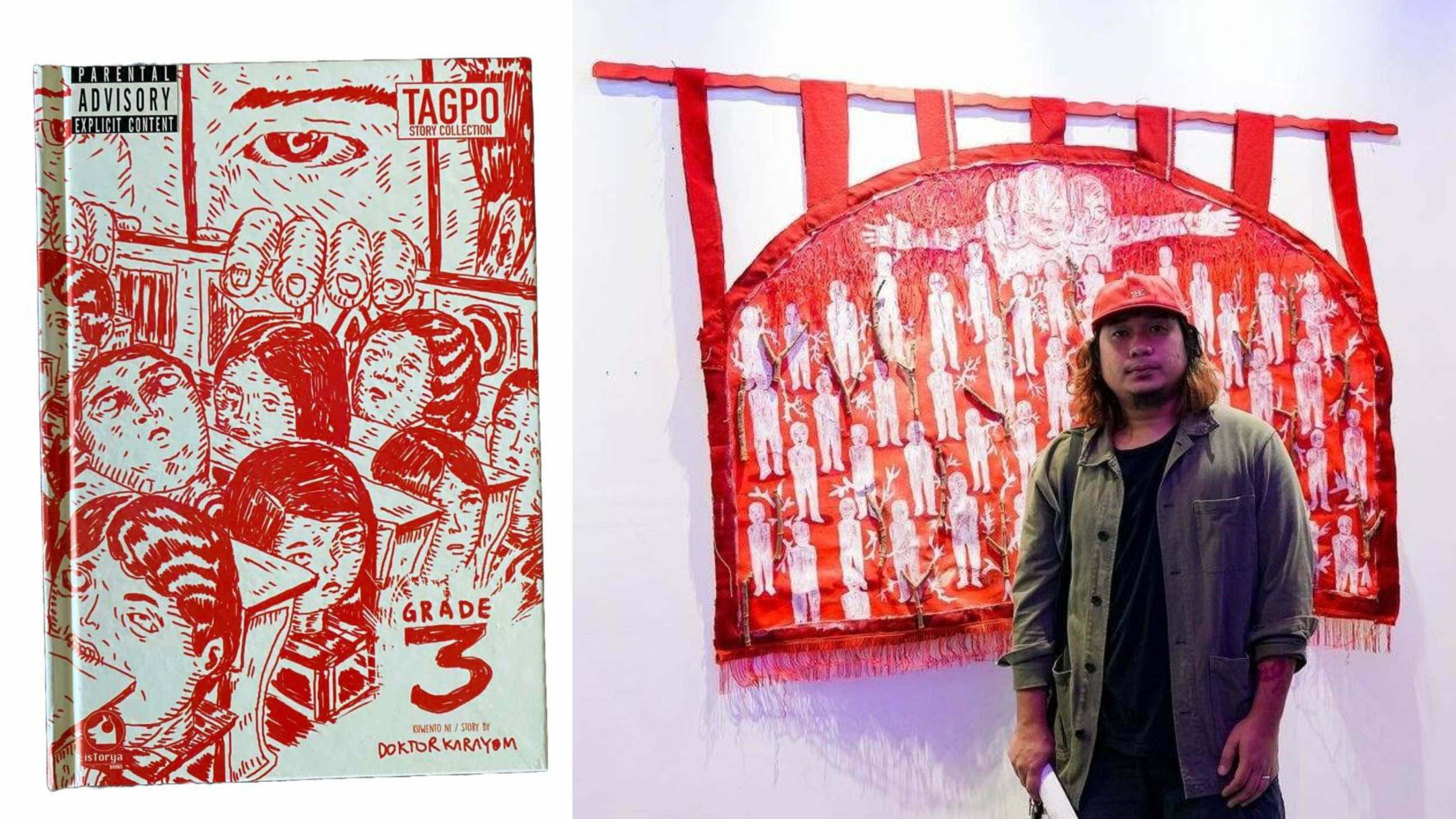![The Inner Mongolia autonomous region's Hulunbuir celebrates the Winter Nadam Festival with performances. [PHOTO BY XU LIN/CHINA DAILY]](https://lifestyle.inquirer.net/files/2019/01/01-15-2019-Winter-Nadam-Festival-01_web.jpg)
BEIJING — Nadam celebrations showcase Inner Mongolia’s ethnic culture and offer an ideal opportunity for travelers to explore more of what makes Hulunbuir a winter wonderland, Xu Lin and Yuan Hui report in Hulunbuir, Inner Mongolia.
Travelers bundle up so that only their eyes are exposed to the frigid winds-but their eyelashes quickly freeze. Not even hot water stays liquid at these temperatures. Visitors splash hot water into the air and watch it fall as snow and tiny icicles.
This is what makes Inner Mongolia autonomous region’s Hulunbuir city a winter wonderland for about seven months a year.
The celebrated summer retreat is luring more visitors during the cold season. Travelers explore its snowy landscapes, activities and ethnic culture.
Many are from the south, where snow is rare. They brave the chilly weather to build snowmen and stage snowball fights.
Over 17.4 million tourists visited Hulunbuir from January to October last year. They generated about 60 billion yuan ($8.83 billion) in revenue.
Hulunbuir recently celebrated the Winter Nadam Festival with performances of such ethnic traditions as horse riding.
![Tourists find the city of Hulunbuir is a winter wonderland. [PHOTO BY XU LIN/CHINA DAILY]](https://lifestyle.inquirer.net/files/2019/01/01-15-2019-Winter-Nadam-Festival-02_web.jpg)
Visitors can ski and fish, and ride dog sleds and snowmobiles.
The traditional festival-nadam translates from Mongolian as “entertainment” or “recreation”-features horse races, wrestling matches and archery contests. It’s staged twice a year-once in summer and once in winter.
Hulunbuir is an ideal destination for carnivores. It’s known for its beef, mutton and lamb chops washed down with salty milk tea.
Boiled beefsteaks are dipped in sauce with chives or served with potatoes. Lamb legs are smoked for three hours to absorb the seasonings.
Hulun Lake abounds with such aquaculture as white fish and white shrimp, which are often deep-fried. White mushrooms are harvested in August and September, and dried for winter.
Downtown Hulunbuir is two hours’ drive from Manzhouli, a major land port on the border with Russia with a tax-free zone.
Manzhouli’s China-Russia-Mongolia Ice Snow Festival will last until February.
It features 110 ice and snow sculptures illuminated with colorful lights at night. Visitors to the land port can purchase inexpensive Russian goods like chocolate.
Travelers visit the border gate, No 41 Boundary Monument and nearby Russian towns.
Matryoshka Square hosts a 30-meter-high building in the shape of a nesting doll painted with three faces-ethnic Han, Mongolian and Russian-looking in different directions.
The square also features over 200 smaller doll statues and ornate Easter eggs.
A nearby hotel is also shaped like a nesting doll and decorated according to the theme-lamps, doors and closets are all shaped like the toys.
![A woman from Ergun greets guests by offering them khleb (bread) dipped in salt. [PHOTO BY XU LIN/CHINA DAILY]](https://lifestyle.inquirer.net/files/2019/01/01-15-2019-Winter-Nadam-Festival-03_web.jpg)
Twenty-one ethnic groups inhabit the city.
Scalloped domes and tent roofs dot the cityscape.
Many of the ethnic Russian locals speak fluent Chinese. They’ve preserved many of the traditions of their immigrant ancestors.
Many Chinese settled along the border when the Chinese Eastern Railway was completed in the early 1900s.
A gold rush between the end of the 19th and early 20th centuries lured Chinese miners to the Ergun River that forms part of the border.
Many Russians also came to the river during the period.
This history is portrayed in the local musical, The Love of Ergun.
It tells the story of a young Russian woman, who falls in love with a Chinese gold miner. They return to his hometown, Ergun, and wed.
It’s a portrait of the marriages between ethnicities at the time. The fifth generation of their descendants live in the area today.
The city’s Liliya Manor offers accommodation in Russian-style buildings and Russian dining and cultural experiences. Its founder, Feng Yuxia, is the second-generation descendant of a Chinese-and-Russian family. She makes khleb (bread) according to her Russian grandmother’s recipe.
Locals in traditional Russian garb greet guests by observing a tradition of offering them khleb dipped in salt.
The manor’s Khleb Culture Center showcases khleb culture. Visitors can watch hosts make the bread or make it themselves, and sample different flavors and shapes.
Indeed, the warmth of the locals is one of the many appeals that make Hulunbuir a hot destination in the cold season.
Tags:
Guangzhou, Transport Hub, Aviation, Infrastructure, Railway, Business, China, Asia
Guangzhou to build itself into global transport hub
China Daily/Asia News Network
BEIJING — Traffic planners in Guangzhou, Guangdong province, have outlined a bold blueprint for the city’s transportation development, vowing to make the city a global transport hub by 2035.
According to the recently published Guangzhou Comprehensive Transportation Hub Plan (2018-35), people will be able to fly from Guangzhou to most major cities in the world within 12 hours, with direct express links to cities in the Guangdong-Hong Kong-Macao Greater Bay Area and easy access to the high-speed railway network.
Under the plan, local authorities will work to upgrade infrastructure development in aviation, as well as in railway and highway networks.
Construction of the third phase of expansion at Terminal 3 of the Guangzhou Baiyun International Airport will begin in 2020. It will be able to handle up to 140 million passengers annually by 2035.
The number of international destinations will increase to 190, with an international air passenger transfer rate of more than 35 percent, under the plan.
The airport currently serves 87 international destinations, fewer than airports in Beijing, Shanghai and Hong Kong.
On Jan 10, the airport signed a cooperation agreement with the International Air Transport Association, becoming the nation’s first airport to establish a strategic partnership with the organization.
Under the agreement, the two parties will work closely with the technology and development trends from the global aviation community.
Moreover, 10 railway stations will serve the seven districts of the city, providing easier access to high-speed railways for passengers in the central urban area.
Currently, passengers have to travel about one hour from the downtown area to Guangzhou South Railway Station to pick up high-speed trains.
“High-speed railway service between the downtown area of Guangzhou and nearby cities is of great importance to increasing traffic efficiency,” said Zhang Aiming, who travels frequently between Guangzhou and Zhuhai.
Inside the city, Guangzhou will build an inner-city rail network of 2,000 kilometers by 2035 to shorten the transit time to about half an hour between the suburbs and the downtown areas, the plan said.
Hu Gang, a professor of architecture at Jinan University in Guangzhou, said the faster city rail network would help expand population in the suburbs and reduce the burdens of traffic, environment and housing prices in the downtown areas.
“The suburbs will become a new area for living and working as the city boosts its traffic efficiency,” Hu said.








































